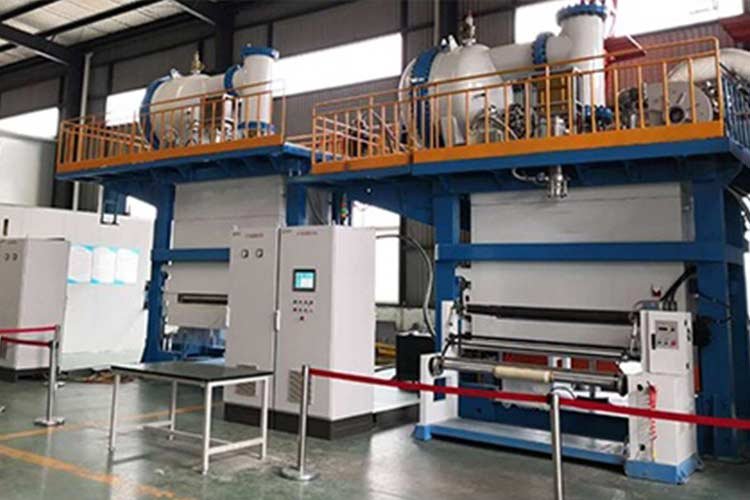E-Beam Machine: Transforming Sterilization Technology
Introduction to E-Beam Machines
In a fast-paced world, effective sterilization is essential for the safety of medical devices, food products, and pharmaceuticals. Among the many available technologies, the e-beam machine is particularly noteworthy. Known for its speed and efficiency, the e-beam sterilizer uses high-energy electrons to eliminate harmful microorganisms, making it vital across multiple sectors.
What is an E-Beam Machine?
An e-beam machine, also called an electron beam machine, generates a concentrated beam of high-energy electrons. This technology disrupts the DNA of microorganisms, making them inactive and ensuring effective sterilization. Unlike traditional methods, the electron beam sterilizer can complete the sterilization process in just a few seconds.
How E-Beam Machines Operate
The functioning of electron beam sterilization equipment consists of several key steps:
- Preparation: Products are placed in a vacuum chamber or on a conveyor system.
- Electron Beam Generation: The machine produces a high-energy electron beam.
- Beam Delivery: This beam is directed toward the target material.
- Sterilization: The electrons penetrate the material, destroying microorganisms.
- Cooling: Finally, the sterilized products are cooled to room temperature.
This efficient process highlights the effectiveness of e-beam sterilization equipment, making it a preferred choice in various industries.
Advantages of E-Beam Sterilization
E-beam sterilization offers numerous benefits over conventional methods:
1. Quick Processing Times
A major advantage of the e-beam machine is its rapid processing capabilities. While traditional sterilization can take hours or even days, e-beam sterilization can be completed in seconds. This efficiency not only boosts productivity but also minimizes waiting times for critical products.
2. Reduced Energy Use
E-beam machines are designed for energy efficiency, consuming less energy compared to traditional sterilization methods. This leads to lower operational costs and a smaller environmental footprint.
3. Eco-Friendly
Unlike chemical sterilization methods, e-beam sterilizers do not use harmful substances, making them a more environmentally friendly option that supports sustainability efforts across industries.
4. Enhanced Product Safety
By allowing sterilization to occur while products remain in their final packaging, electron beam sterilization equipment significantly reduces contamination risks. This feature is particularly vital for medical devices and pharmaceuticals, where safety is crucial.
Applications of E-Beam Machines
E-beam machines have a wide range of applications across different industries. Here are some of the most common uses:
1. Medical Device Sterilization
E-beam sterilization equipment is extensively utilized to sterilize medical devices such as surgical instruments, catheters, and implants. By ensuring these items are free from harmful microorganisms, the e-beam machine greatly lowers the risk of infections and enhances patient safety.
2. Food Preservation
In the food industry, ebeam machines play a critical role in extending the shelf life of perishable products. By destroying harmful bacteria and pathogens, these machines help keep food safe for consumption, particularly for meat, poultry, and seafood, which are susceptible to spoilage.
3. Pharmaceutical Sterilization
Pharmaceutical manufacturers rely on electron beam sterilizers to ensure their products are free from contaminants. This application is essential for maintaining the safety and effectiveness of medications, ensuring they are safe for human use.
4. Material Modification
In addition to sterilization, e-beam machines can modify the properties of materials, improving their strength, durability, and resistance to wear and tear. This capability opens up new opportunities in manufacturing and materials science.
Comparing E-Beam Machines to Other Sterilization Methods
When evaluating sterilization options, it’s essential to compare e-beam sterilization with traditional methods:
1. Time Efficiency
Traditional sterilization methods often require long exposure to heat or chemicals, while the electron beam machine offers a rapid solution. This speed can be vital in environments where time is critical, such as hospitals or food processing facilities.
2. Energy Consumption
Conventional methods can consume substantial energy, especially in high-volume applications. In contrast, e-beam sterilizers are more energy-efficient, making them a sustainable choice for businesses aiming to reduce operational costs.
3. Safety and Environmental Impact
Chemical sterilization processes frequently involve hazardous substances that can pose risks to health and the environment. E-beam sterilization equipment, however, eliminates the need for chemicals, thereby minimizing environmental impact.
Selecting the Right E-Beam Machine
When choosing an e-beam machine, consider several factors:
- Production Capacity: Assess the machine’s throughput to ensure it meets your operational needs.
- Size and Footprint: Consider the available space in your facility and select a machine that fits well.
- Maintenance Requirements: Look for equipment that is easy to maintain to minimize downtime.
- Cost: Weigh the initial investment against long-term operational savings.
Conclusion
The e-beam machine is revolutionizing the field of sterilization. With its speed, energy efficiency, and environmental benefits, it stands out as an excellent choice for various sectors, from healthcare to food preservation. As more organizations recognize the advantages of e-beam sterilization equipment, its adoption is likely to grow, further enhancing safety and efficiency across industries.
In summary, the electron beam machine is more than just a tool; it signifies a significant leap in sterilization technology. Whether in the medical, food, or pharmaceutical industry, investing in e-beam sterilizers can greatly improve sterilization processes and ensure product safety.






